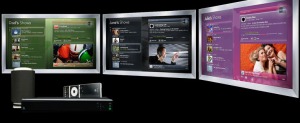Sorry for the radio silence on my blog. I’ve been down for a few days with the same thing everyone else seems to have. But since I’m a workaholic I had to get some value out of my sick time so I spent as many hours as I could watching TV, movies, and miscellaneous video. All in the name of research, of course.
A few things I learned:
- The Roku Player’s HD quality is surprisingly good. The upgrade happened earlier this year. Yes, I have hit a few buffering issues as many predicted would be the case — even though I’m on fiber and wired ethernet. But the quality is still sharp and the selection, thanks to Netflix, is expanding dramatically. My wife is getting her Jane Austen fix, my kids are watching all the kids shows they want, and I’m catching everything from PBS documentaries to Clash of the Titans (what kid rasied in that era doesn’t want to see Clash of the Titans again). Not all of that content is available in HD, but we don’t seem to care.
- HD DVRs are a pain. I don’t even record The Office and 30 Rock in HD anymore because it takes up way too much space and those aren’t shows that need HD quality to be funny. Lost, Heroes, and Fringe are all still on my HD list, of course. Even nerds have their standards.
- My Boxee-hacked AppleTV seriously rocks. I mean seriously. With Hulu in there, I did a ton of catching up, including things that were already recorded on my DVR, but with faster access to them on the AppleTV I found it more convenient (if you know me, you know convenience is my watchword) to watch via Boxee. I also started really playing with the personal media sharing that Boxee enables from the home network. It’s as clumsy as most other home-media sharing solutions, but I can see it getting better. Now if Boxee only had a business model. But it is now available in Alpha for Windows, so we’ll see how far it can go before it needs some revenue.
Most of all, I have learned that if I needed to buy a second of any these devices, I would buy the Roku. It’s a bit of an act of faith, on the assumption that more content is coming (a separate post on that coming later). But the price is right and we spend hours watching it. Having a second one for the other TV room makes sense. It’s cheaper than the premium you’d pay to build Netflix into an LG or Vizio TV, and it’s more flexible. But I get ahead of myself, I’ll post on that as a separate topic later today.



 Posted by James
Posted by James 





You must be logged in to post a comment.